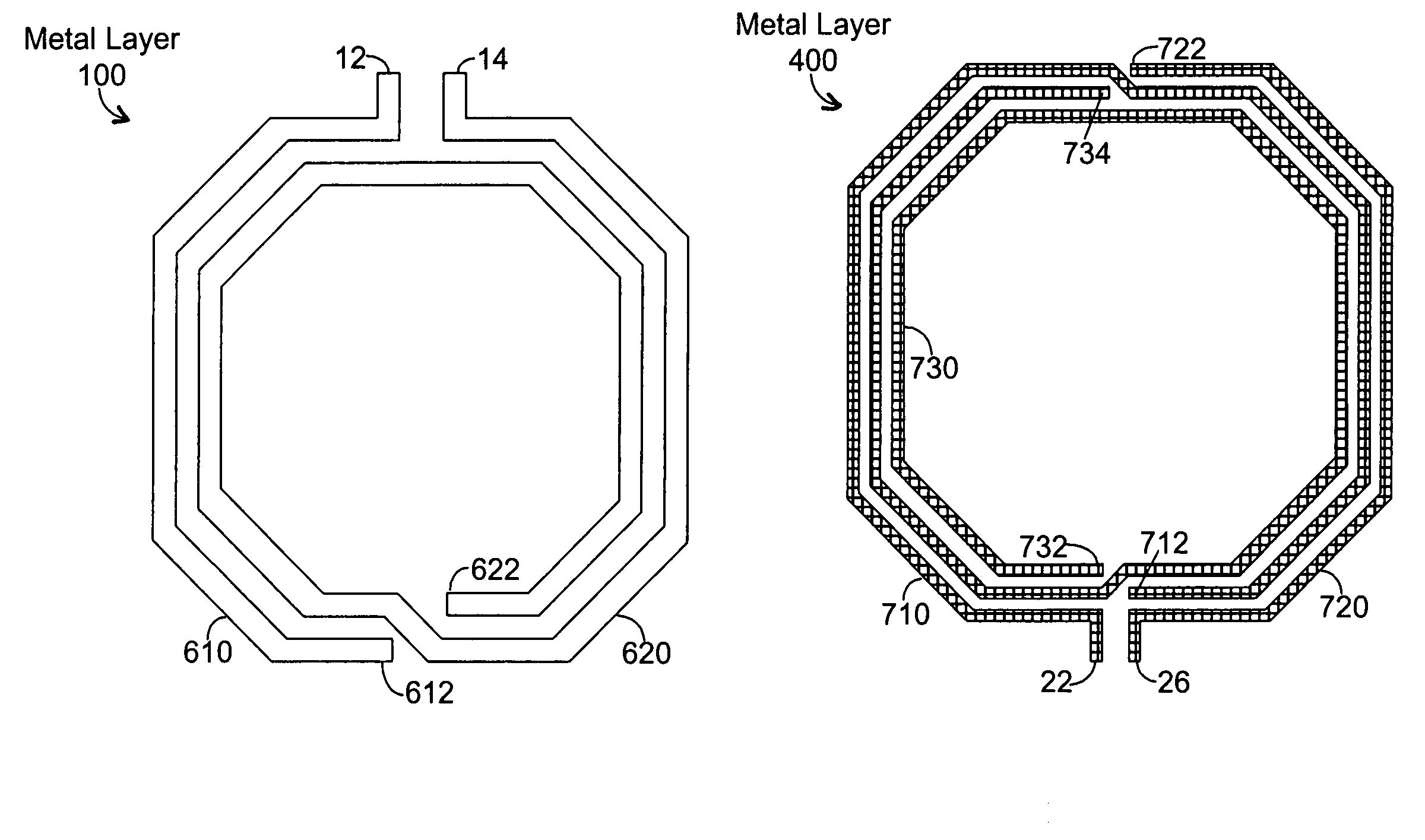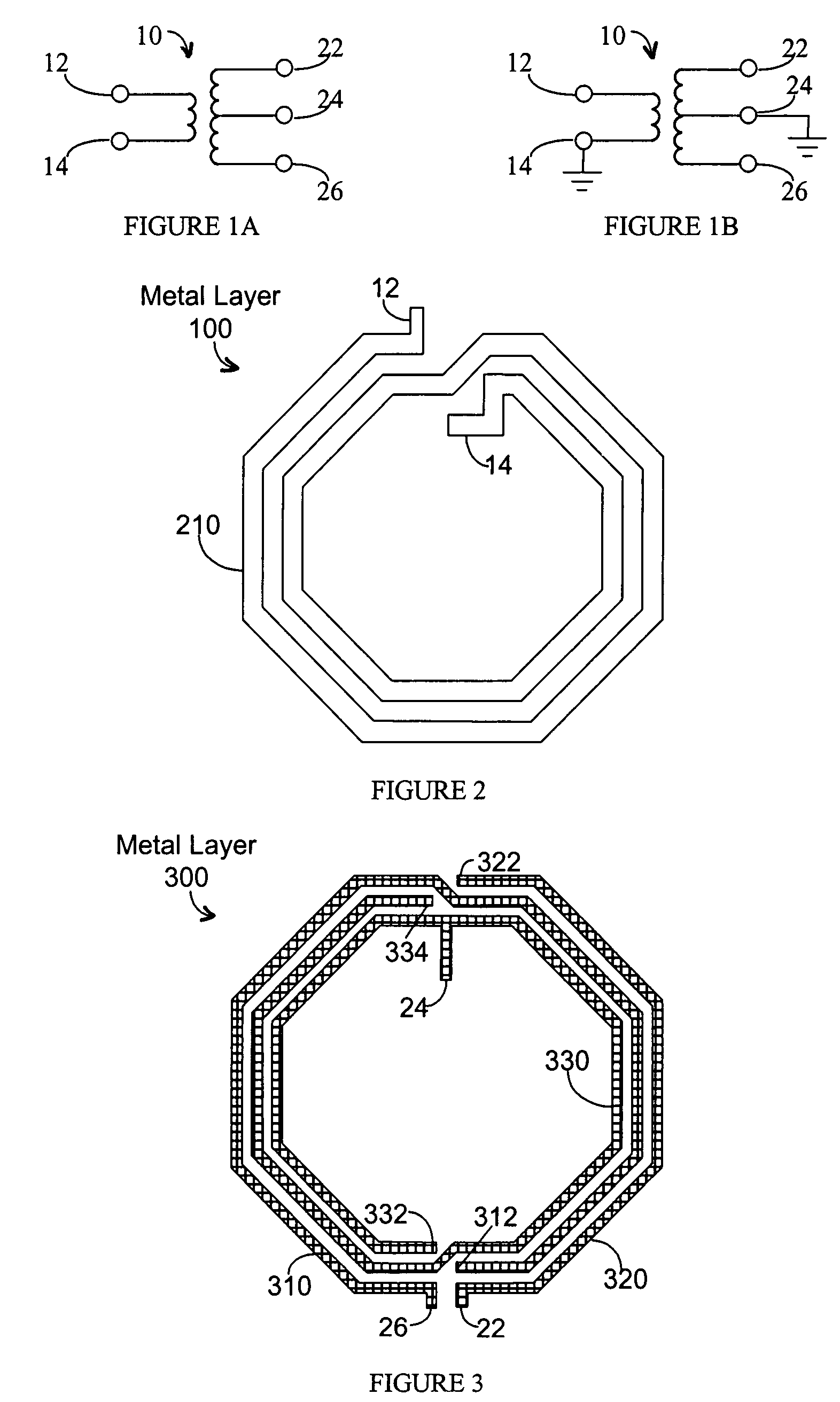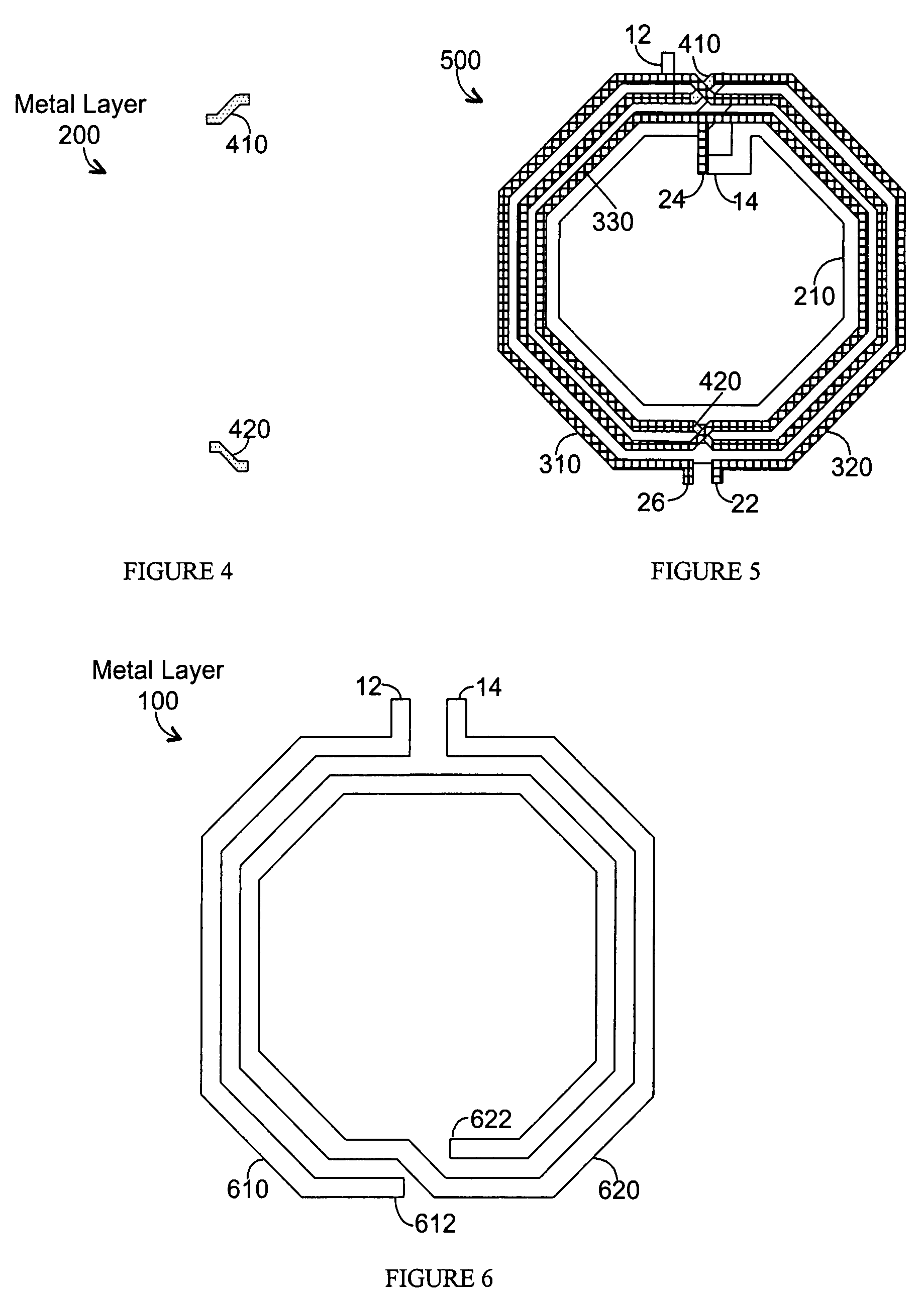Integrated high frequency BALUN and inductors
a high-frequency balun and inductors technology, applied in the field of semiconductor integrated circuits, can solve the problems of low quality, limited integration, and inability to address the capacitive coupling between primary and secondary windings
- Summary
- Abstract
- Description
- Claims
- Application Information
AI Technical Summary
Benefits of technology
Problems solved by technology
Method used
Image
Examples
Embodiment Construction
[0028]Deficiencies of the prior art have lead to a need to provide BALUN transformers that are more efficient in their design, particularly in the number of metallization layers used for their implementation without significantly adversely affecting the BALUN transformer performance. The solution of the present invention accomplishes this target by having the windings of the primary inductor in one metal layer and the windings of the secondary inductors in another metal layer not only vertically separated from, but also horizontally displaced from the first metal layer. The displacement reduces the capacitive coupling between the primary and secondary coils. Furthermore, the implementations shown enable the use of only three or four layers of metal for a BALUN transformer. It should be noted that the displacement should be such that a substantial magnetic coupling between the primary and secondary inductors of the BALUN is still achieved to ensure the proper performance of the BALUN...
PUM
| Property | Measurement | Unit |
|---|---|---|
| diameter | aaaaa | aaaaa |
| diameter | aaaaa | aaaaa |
| path width | aaaaa | aaaaa |
Abstract
Description
Claims
Application Information
 Login to View More
Login to View More - R&D
- Intellectual Property
- Life Sciences
- Materials
- Tech Scout
- Unparalleled Data Quality
- Higher Quality Content
- 60% Fewer Hallucinations
Browse by: Latest US Patents, China's latest patents, Technical Efficacy Thesaurus, Application Domain, Technology Topic, Popular Technical Reports.
© 2025 PatSnap. All rights reserved.Legal|Privacy policy|Modern Slavery Act Transparency Statement|Sitemap|About US| Contact US: help@patsnap.com



